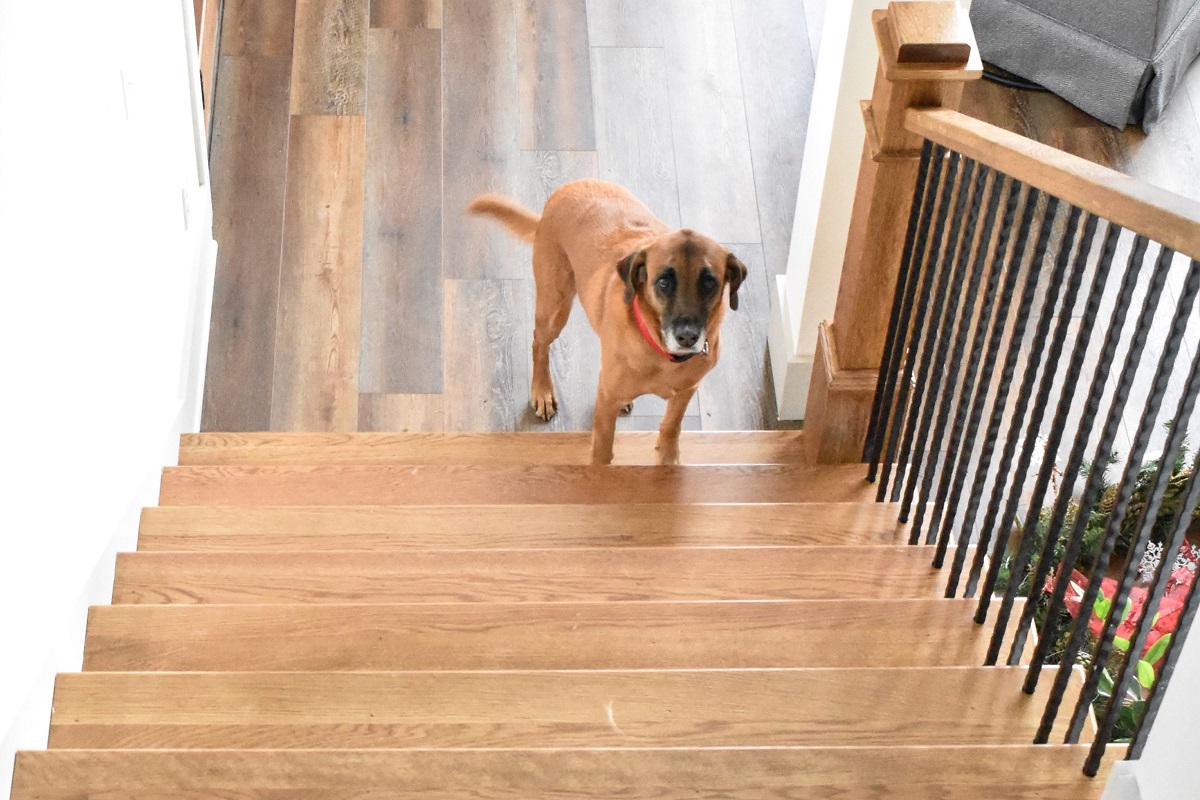

Articles
How To Teach Dog To Go Up Stairs
Modified: February 23, 2024
Discover effective techniques and expert tips in our articles on how to teach your dog to go up stairs.
(Many of the links in this article redirect to a specific reviewed product. Your purchase of these products through affiliate links helps to generate commission for Storables.com, at no extra cost. Learn more)
Introduction
Teaching your dog to navigate stairs can be a challenging but rewarding endeavor. For some dogs, going up or down stairs can be a daunting and even terrifying experience. Whether it’s due to fear, lack of exposure, or a previous negative experience, it’s important to approach stair training with patience, understanding, and positive reinforcement.
In this article, we will delve into the reasons behind a dog’s fear of stairs, discuss how to prepare your dog for stair training, and provide strategies for gradually exposing them to stairs in a safe and comfortable manner. We will also explore techniques to build trust and confidence, the importance of using positive reinforcement, and how to provide physical assistance when needed. Additionally, we will address common challenges that may arise during stair training and provide troubleshooting tips to help you and your dog overcome them.
Remember, each dog is unique, and the time it takes for them to become comfortable with stairs may vary. It’s crucial to be patient, supportive, and understanding throughout the training process. With consistency, kindness, and the right approach, your dog can overcome their fear and navigate stairs with confidence.
Key Takeaways:
- Gradual exposure and positive reinforcement are key to helping your dog conquer their fear of stairs. Celebrate small victories and create a calm, supportive environment to build trust and confidence.
- Be patient and understanding as you prepare your dog for stair training. Consider their unique fears and needs, and provide physical assistance and support when necessary. Remember, each dog’s journey is unique.
Read more: Why Won’t My Dog Go Up The Stairs
Understanding your dog’s fear of stairs
Before diving into stair training, it’s important to understand the underlying reasons behind your dog’s fear. There can be various factors contributing to a dog’s aversion to stairs, including past negative experiences, a lack of exposure during the critical socialization period, or even a natural fear of heights.
For some dogs, a previous traumatic event, such as a fall or injury on stairs, can create a lasting fear. This fear can cause them to associate stairs with danger, leading to anxiety and avoidance. Other dogs may simply be unfamiliar with stairs if they have not had prior exposure or have not been properly socialized to different environments during their early development.
Additionally, some breeds may have a genetic predisposition towards fear of heights, making stairs particularly intimidating. It’s essential to recognize that each dog’s fear is unique, and understanding the root cause will help tailor your training approach to meet their specific needs.
Observing your dog’s body language is crucial in assessing their fear levels. Signs of fear can include trembling, cowering, avoidance behaviors, excessive panting, and even aggression. Recognizing these signs will enable you to respond appropriately and make adjustments to the training process as needed.
By understanding your dog’s fear and acknowledging their unique experiences, you can approach stair training with empathy and patience. Creating a safe and supportive environment will lay the foundation for successful training and help your dog overcome their fear of stairs.
Preparing your dog for stair training
Before jumping into stair training, it’s important to ensure that your dog is physically and mentally prepared. This preparation phase will help set them up for success and reduce any potential anxiety or stress associated with the training process.
Firstly, ensure that your dog is in good health and free from any physical limitations that may affect their ability to navigate stairs. If your dog has any pre-existing joint or mobility issues, it’s crucial to consult with your veterinarian before starting stair training. They may recommend specific exercises or modifications to help strengthen your dog’s muscles and joints.
Additionally, acclimating your dog to wearing a comfortable and secure harness can provide them with a sense of stability and support during stair training. Introduce the harness gradually, allowing your dog to get used to the sensation and associate it with positive experiences, such as treats or playtime.
Creating a calm and positive training environment is also essential. Remove any distractions or potential hazards that could cause your dog to become anxious or overwhelmed. Providing a quiet and peaceful space will facilitate focus and receptiveness during the training sessions.
Engaging in mental and physical exercises before stair training can also help your dog relax and release excess energy. Taking them for a brisk walk or engaging in interactive play sessions can help alleviate any restlessness and promote a more receptive mindset.
Lastly, ensure that you have the necessary treats or rewards on hand to reinforce positive behavior during training. Choose high-value treats that your dog finds particularly enticing to maximize their motivation and engagement.
By taking the time to prepare your dog physically, mentally, and emotionally, you are setting the stage for a successful stair training experience. A well-prepared dog will be more receptive to the training process and will have a better chance of overcoming their fear of stairs.
Gradual exposure to stairs
When it comes to training a dog to conquer their fear of stairs, gradual exposure is key. Rushing the process or pushing your dog too quickly can cause setbacks and increase their anxiety. Instead, take a step-by-step approach that allows your dog to slowly become comfortable with stairs at their own pace.
Start by introducing your dog to the sight and presence of stairs from a distance. Bring them to an area where they can observe stairs without feeling pressured to approach or interact with them. Use positive reinforcement techniques, such as treats or praise, to create positive associations with the stairs’ presence.
Over time, gradually decrease the distance between your dog and the stairs, always observing their body language for signs of discomfort or anxiety. If your dog becomes visibly nervous or hesitant, it’s important to give them space and avoid forcing them closer to the stairs. Patience is key in this process.
Once your dog is comfortable being in close proximity to the stairs, you can begin the next stage of training: introducing them to the first step. Encourage your dog to approach and sniff the step, rewarding them with treats and praise for any positive interaction. Repeat this step until your dog is comfortable stepping onto and off of the first step.
As your dog becomes more confident with the first step, gradually progress to the next step, repeating the same process of positive reinforcement and repeated exposure. Continue this step-by-step approach until your dog is comfortable navigating the entire set of stairs.
Remember to be patient and celebrate every small victory along the way. Each successful interaction with the stairs is a step forward in overcoming your dog’s fear.
During the exposure process, it’s important to create a safe environment by using baby gates or barriers to prevent your dog from accidentally falling or slipping on the stairs. Supervision is key to ensuring their safety and preventing any potential accidents.
By gradually exposing your dog to stairs and allowing them to progress at their own pace, you are building their confidence and trust. This gradual approach will help your dog overcome their fear and develop the necessary skills to navigate stairs with ease.
Building trust and confidence
Building trust and confidence is a crucial aspect of helping your dog overcome their fear of stairs. By establishing a strong bond and creating a positive association with stair training, you can boost their confidence and make the process more enjoyable for both of you.
One effective way to build trust is through positive reinforcement. Whenever your dog displays any bravery or progress during stair training, reward them with treats, praise, and affection. This positive reinforcement reinforces their confidence and motivates them to continue progressing.
Always approach stair training with patience and avoid rushing your dog or forcing them to confront their fear. Respect their limits and give them the time and space they need to feel comfortable. Pushing your dog too quickly can erode their trust and exacerbate their fear.
Additionally, using toys or games can help make stair training a fun and engaging experience. For example, scatter treats on each step and encourage your dog to find them, turning the training into a stimulating and rewarding game. This helps to distract your dog from their fear and focuses their attention on a positive and enjoyable activity.
It’s also important to be a calm and reassuring presence during stair training. Dogs are highly attuned to their human’s emotions, so maintaining a calm demeanor can help them feel more secure and at ease. Avoid showing frustration or impatience if your dog is struggling. Instead, provide them with gentle encouragement and support.
Building trust and confidence is an ongoing process, so be consistent with your training efforts. Practice regularly and gradually increase the difficulty level as your dog becomes more comfortable and confident with stairs. Remember to celebrate each milestone and be proud of your dog’s progress, no matter how small it may seem.
By focusing on building trust and fostering a positive training environment, you can help your dog overcome their fear of stairs and develop the confidence they need to navigate them with ease.
Start by teaching your dog to sit and stay at the bottom of the stairs. Use treats to encourage them to take one step at a time, praising and rewarding each successful attempt. Be patient and consistent in your training.
Read more: How To Go Up Stairs With A Walker
Positive reinforcement techniques for stair training
Positive reinforcement is a powerful tool when it comes to training your dog to conquer their fear of stairs. By using positive reinforcement techniques, you can create a positive association with stair training and motivate your dog to overcome their fear. Here are some effective strategies to implement:
-
Reward small steps of progress: Break down the stair training process into smaller achievable goals. Reward your dog with treats, praise, and affection for any positive interaction with the stairs, whether it’s approaching them, sniffing them, or taking a single step. By positively reinforcing these small steps, you encourage your dog to continue making progress.
-
Use high-value treats: Choose treats that your dog finds especially delicious and appealing. These high-value treats can serve as powerful incentives during stair training. Reserve these treats specifically for stair training sessions to increase their effectiveness as positive reinforcements.
-
Clicker training: Incorporate the use of a clicker during stair training. The clicker serves as a distinct sound marker to signal that your dog has performed the desired behavior. Pair the clicker with rewards to reinforce positive behavior. For example, click and treat when your dog successfully approaches a step or navigates a few steps. Consistent clicker training helps your dog associate the sound with praise and rewards, reinforcing their progress.
-
Create a calm and positive environment: Minimize distractions and create a quiet and calm environment during stair training. This helps your dog focus on the task at hand and reduces anxiety or fear. Clear the area of any objects that may be perceived as obstacles or hazards, allowing your dog to feel safe and comfortable.
-
Use verbal cues and positive reinforcement: Pair verbal cues with positive reinforcement to create associations between the cues and desired behavior. For example, use a phrase like “Good job!” or “Well done!” when your dog approaches or navigates the stairs. Consistency in using these verbal cues will help your dog understand what you expect from them and reinforce their progress.
Remember that each dog is unique, and what works for one may not work for another. Observe your dog’s reactions and tailor your positive reinforcement techniques to suit their preferences and needs. The goal is to create a positive and rewarding training experience that boosts their confidence and helps them overcome their fear of stairs.
Physical assistance and support during stair training
While positive reinforcement is the key to encouraging your dog to conquer their fear of stairs, providing physical assistance and support can also play a crucial role in their training journey. Here are some ways you can offer physical assistance during stair training:
-
Leash guidance: Attach a leash to your dog’s harness to provide gentle guidance and support as they navigate the stairs. The leash can help you guide their movements and provide reassurance, especially during the initial stages of training. However, be careful not to pull or force your dog, as this may increase their fear or resistance.
-
Leading with treats: Use treats to guide your dog up or down the stairs. Hold a treat in front of their nose, leading them towards the desired direction. This creates a positive association with the stairs and motivates them to follow and overcome their fear. Gradually decrease the reliance on treats as your dog gains confidence.
-
Assistive devices: If your dog is struggling with stair training or has physical limitations, consider using assistive devices such as ramps or pet stairs. These tools can help bridge the gap between the ground and the stairs, making it easier for your dog to navigate. Make sure to introduce these devices gradually and provide positive reinforcement to establish a positive association with their use.
-
Provide support: Physically supporting your dog by gently placing your hands on their hindquarters can give them a sense of stability and confidence. This support can help them feel more secure and balanced as they navigate the stairs. Always be gentle and ensure that your dog feels comfortable with your touch.
Remember, the level of physical assistance needed will vary from dog to dog. Some dogs may require more support and assistance while others may quickly gain confidence and independence. Pay close attention to your dog’s body language and adjust the level of physical assistance accordingly.
As your dog becomes more comfortable with navigating stairs, gradually reduce the physical support and encourage them to take the steps independently. This gradual transition allows them to build self-confidence and reinforces their progress.
Always prioritize your dog’s safety and comfort during stair training. If your dog shows signs of distress or discomfort, take a step back and reevaluate the training approach. Adapt your methods to suit your dog’s individual needs and continue to provide patience, support, and positive reinforcement throughout the training journey.
Troubleshooting common challenges
During stair training, it’s common to encounter challenges or setbacks along the way. Understanding and addressing these challenges promptly can help ensure a successful training experience for your dog. Here are some common challenges you may encounter during stair training and strategies to overcome them:
-
Fear regression: It’s possible for your dog to regress in their progress and exhibit signs of fear or reluctance again. This can happen for various reasons, such as a negative experience or a change in their environment. If this occurs, take a step back in the training process and provide reassurance and support. Revisit previously mastered steps and build your dog’s confidence from there.
-
Lack of motivation: Some dogs may lose motivation or interest in stair training, especially if they don’t see immediate rewards. To combat this, make the training sessions more engaging and rewarding. Use high-value treats, toys, or games to incentivize your dog. Incorporate fun and interactive elements to keep them motivated and eager to participate.
-
Physical limitations: If your dog has physical limitations, such as arthritis or mobility issues, stair training may be particularly challenging. Consult with your veterinarian to ensure that your dog’s physical health is taken into consideration. They may provide guidance on exercises, pain medication, or assistive devices that can help make stair training more manageable for your dog.
-
Anxiety or stress: Some dogs may experience heightened anxiety or stress during stair training. Identify the triggers that cause stress and gradually desensitize your dog to those triggers. Incorporate relaxation techniques such as deep breathing exercises or massage to help your dog relax before and during training sessions. If necessary, seek the guidance of a professional dog trainer or behaviorist to address anxiety-related challenges.
-
Moving to different staircases: Dogs may struggle with generalizing their training to different staircases, as each one may present unique challenges. Gradually expose your dog to different staircases in various environments to help them become comfortable with different scenarios. Start with small variations, such as different materials or different designs, and gradually progress to unfamiliar staircases.
Remember, patience and consistency are key when troubleshooting challenges during stair training. Adapt your strategies to suit your dog’s individual needs and progress at their own pace. Celebrate and reinforce small victories, and never hesitate to seek professional help when needed. With dedication and perseverance, you can help your dog overcome their fear of stairs and develop the necessary skills to navigate them confidently.
Conclusion
Teaching your dog to overcome their fear of stairs is a process that requires patience, understanding, and positive reinforcement. By gradually exposing your dog to stairs, building trust and confidence, and providing physical assistance when needed, you can help them develop the necessary skills and confidence to navigate stairs with ease.
Understanding the root causes of your dog’s fear and tailoring your training approach to their specific needs is crucial. Whether it’s a past negative experience, lack of exposure, or a natural fear of heights, approaching stair training with empathy and kindness is essential.
Utilizing positive reinforcement techniques, such as rewarding small steps of progress, using high-value treats, employing clicker training, and creating a calm and positive environment, will motivate your dog and make the training experience enjoyable for them.
Physical assistance and support, such as leash guidance, leading with treats, or providing hands-on support, can also play a role in helping your dog navigate the stairs with increased confidence and security. Remember to adjust the level of support based on your dog’s individual needs and gradually reduce it as they gain confidence and independence.
Throughout the stair training process, be prepared to troubleshoot common challenges that may arise. Revisiting previously mastered steps, maintaining motivation, addressing physical limitations or anxiety, and gradually exposing your dog to different staircases are strategies that can help overcome these challenges.
In conclusion, with patience, consistency, and a focus on positive reinforcement, you can help your dog conquer their fear of stairs. By building trust, providing support, and celebrating each milestone along the way, your dog will gain the confidence and skills needed to navigate stairs comfortably and confidently.
Always prioritize your dog’s well-being and safety throughout the training process. If necessary, consult with a professional dog trainer or behaviorist who can provide additional guidance and support. With your dedication and love, you can help your dog overcome their fear of stairs and open up a world of new possibilities for them.
Frequently Asked Questions about How To Teach Dog To Go Up Stairs
Was this page helpful?
At Storables.com, we guarantee accurate and reliable information. Our content, validated by Expert Board Contributors, is crafted following stringent Editorial Policies. We're committed to providing you with well-researched, expert-backed insights for all your informational needs.
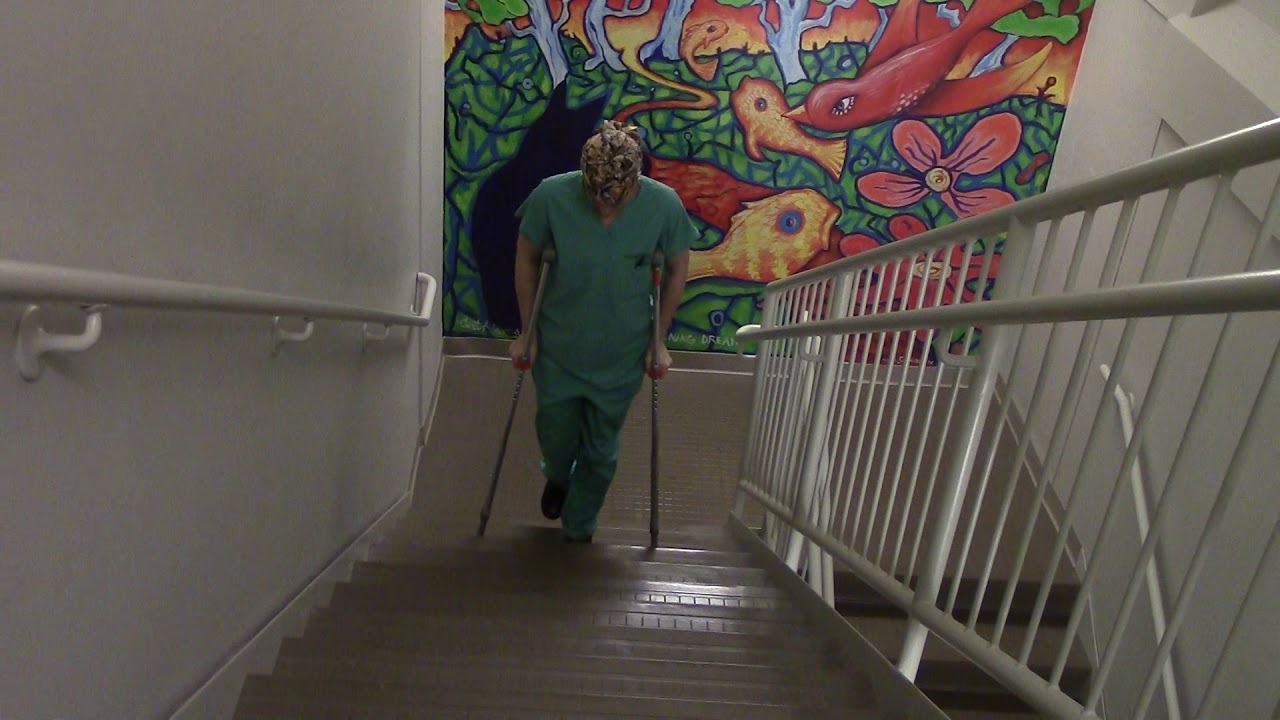
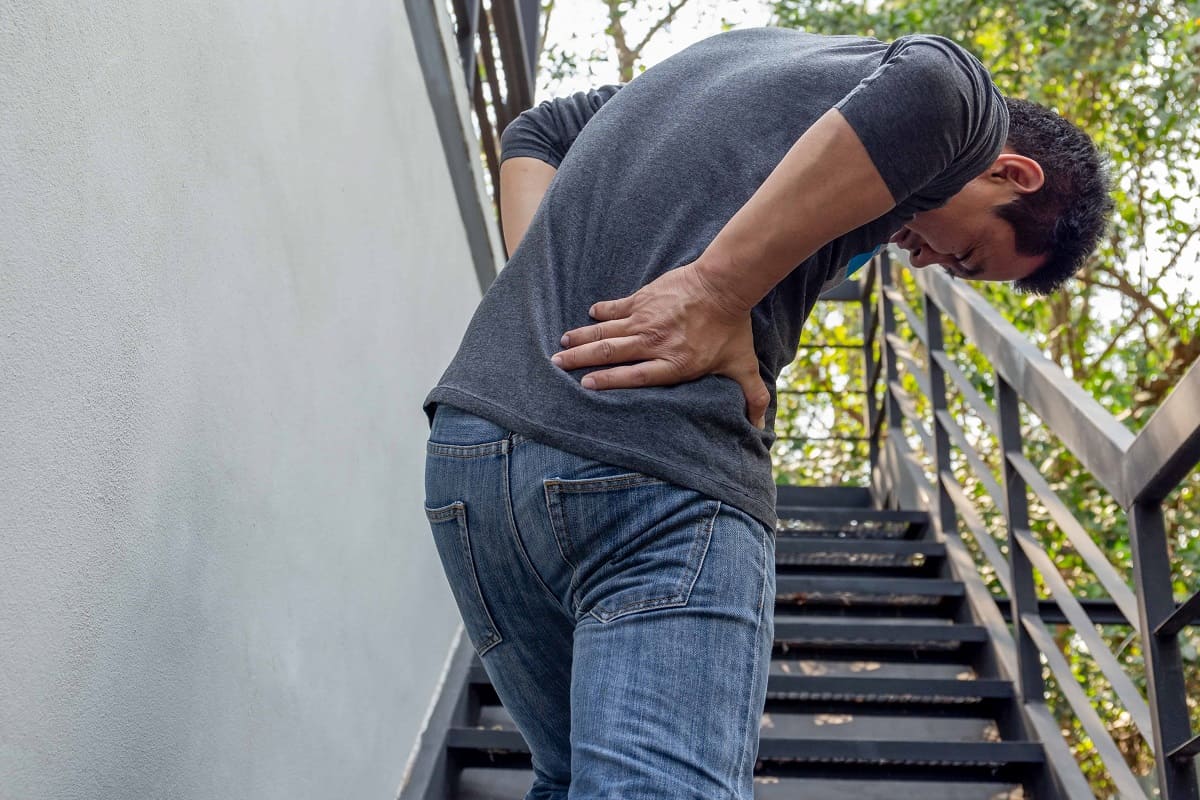
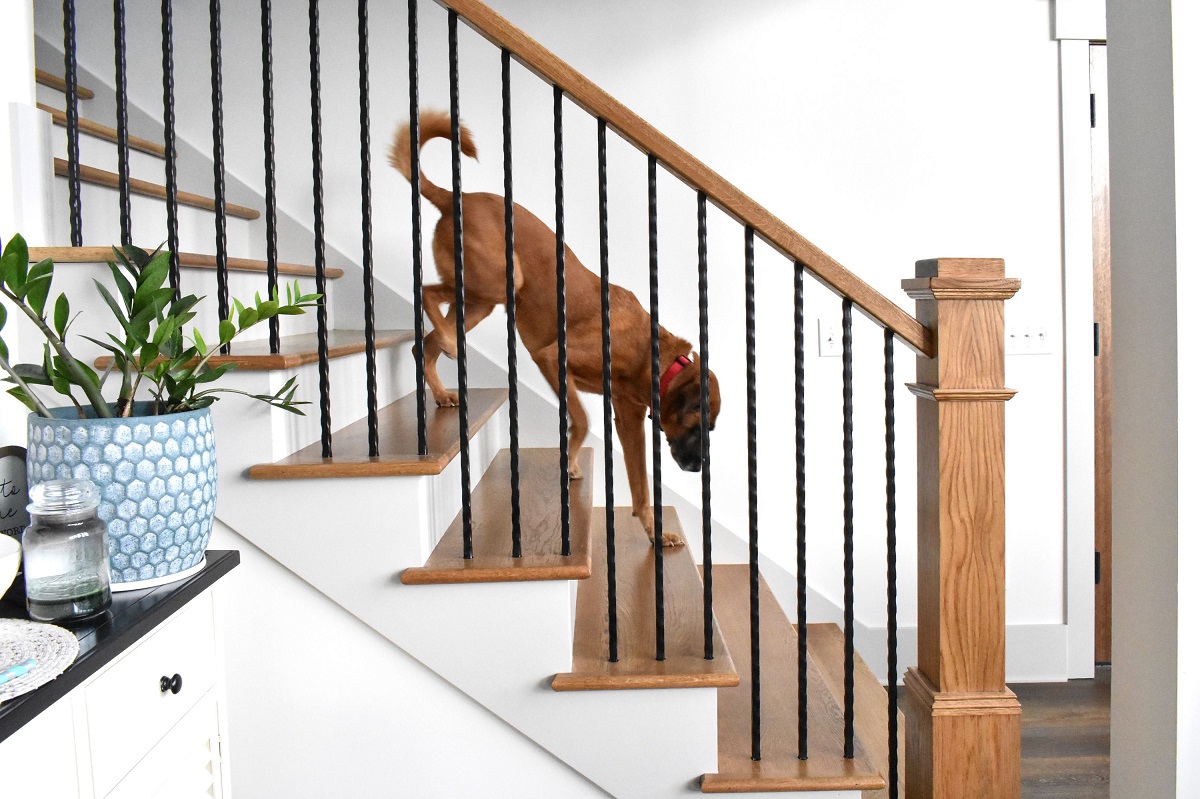
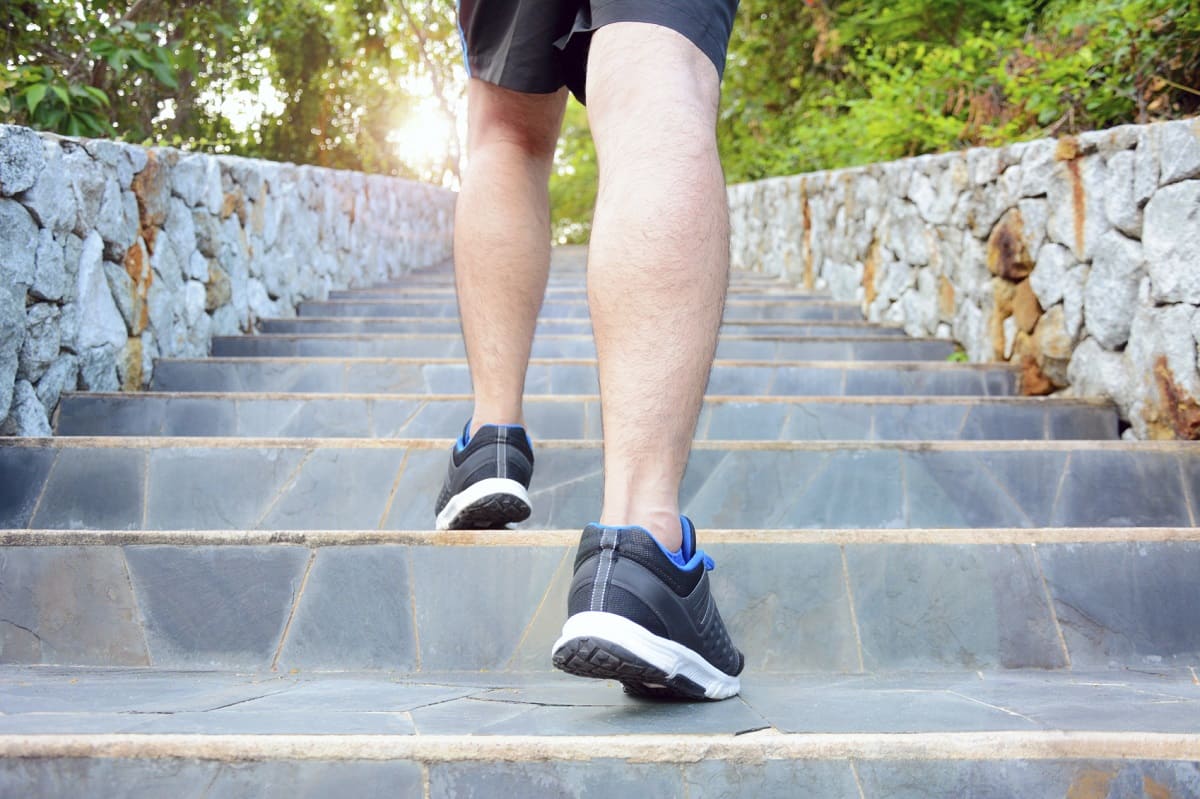
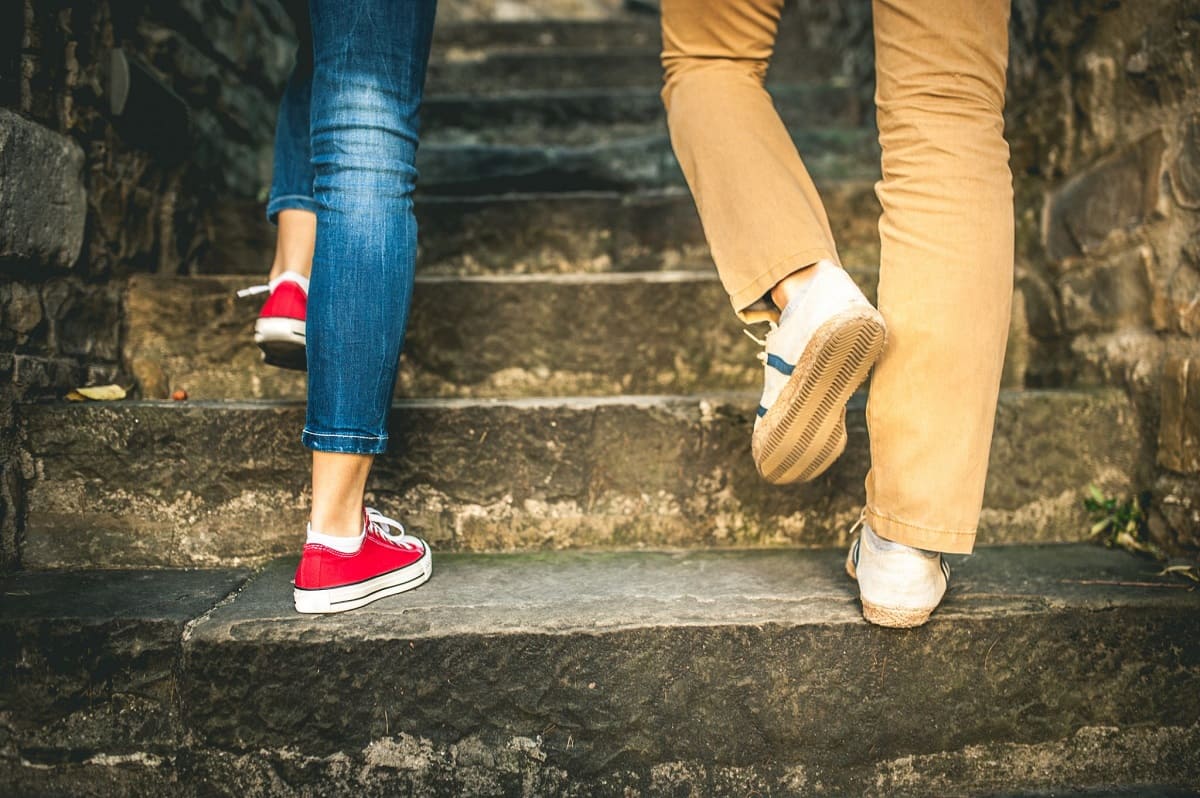

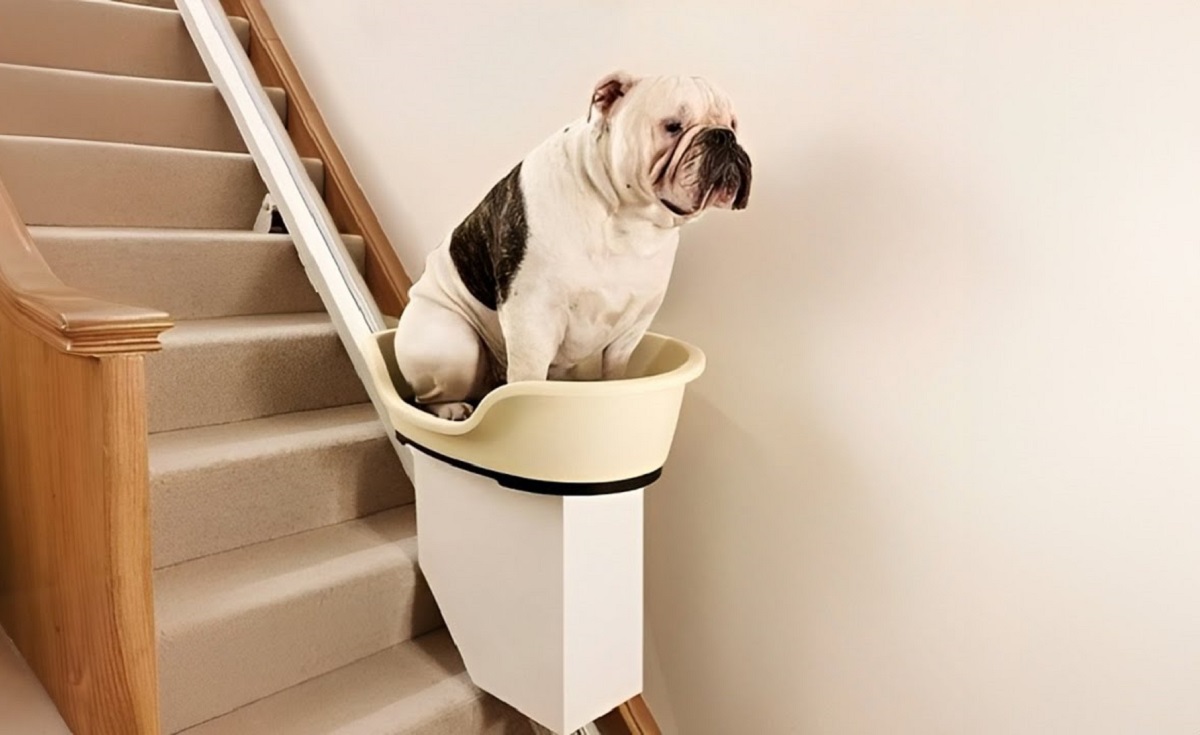
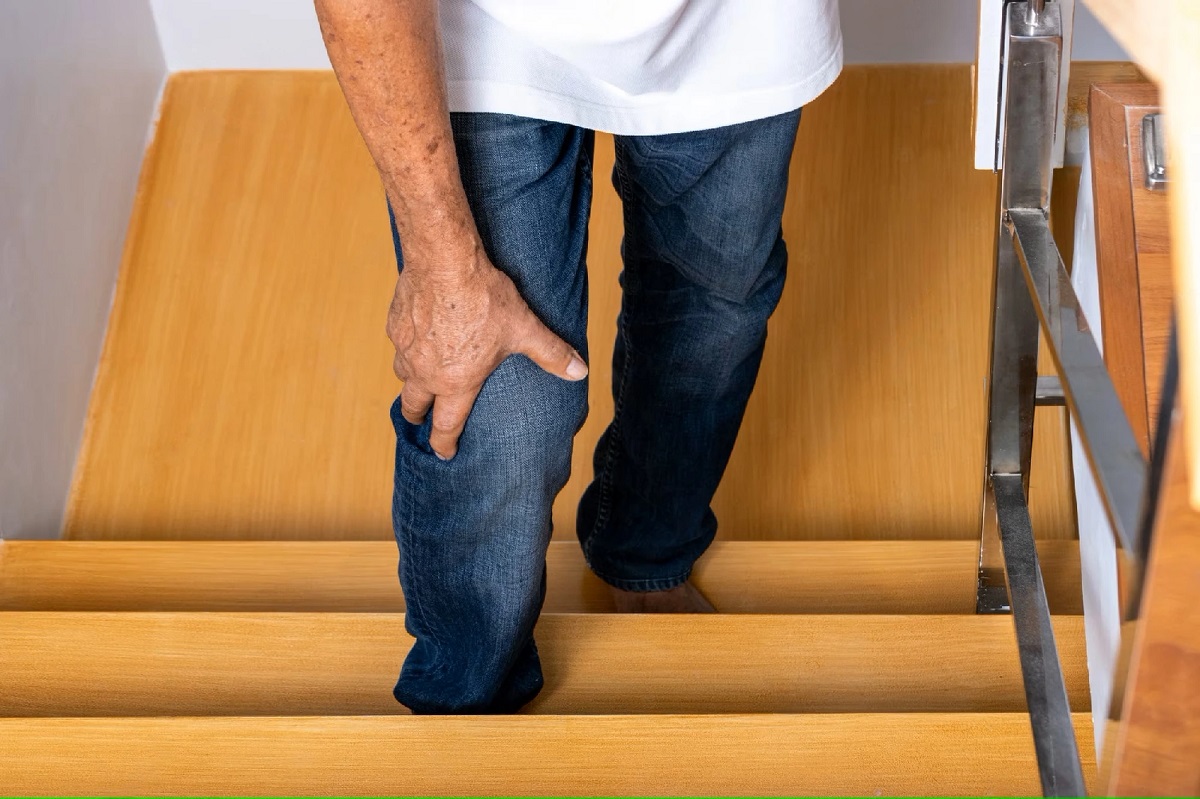
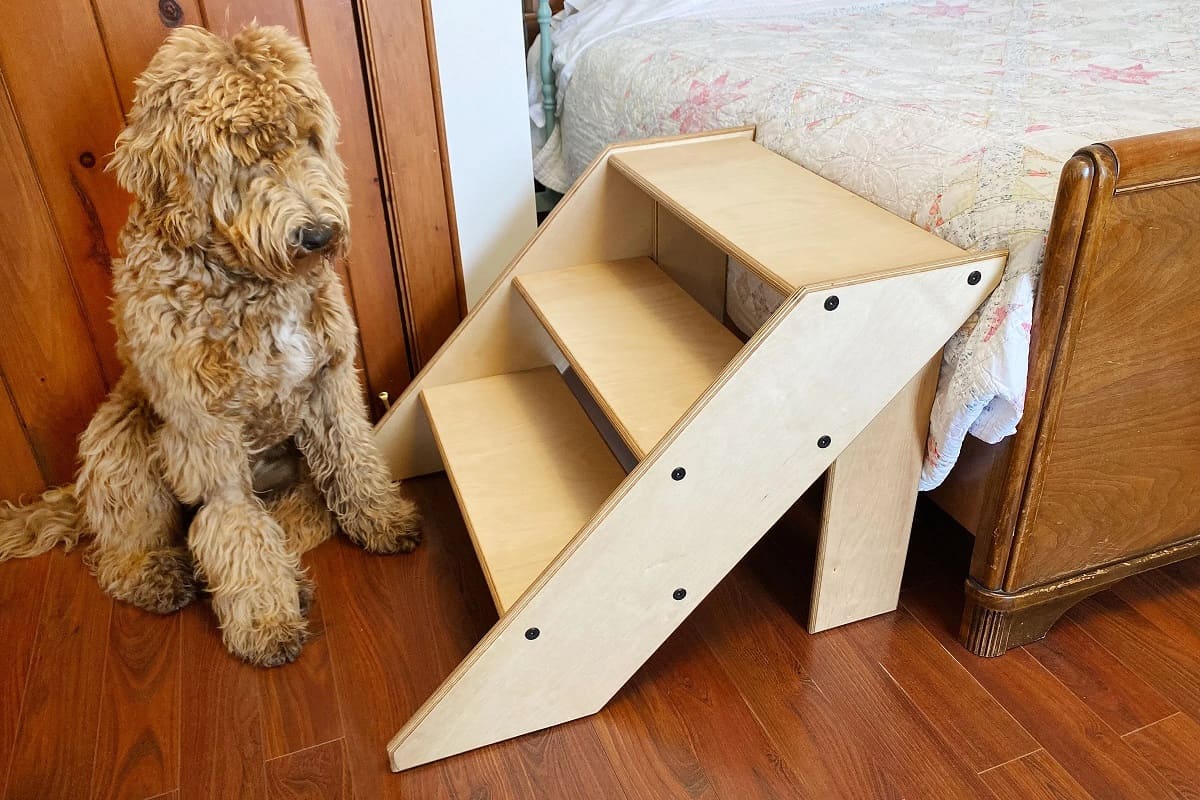
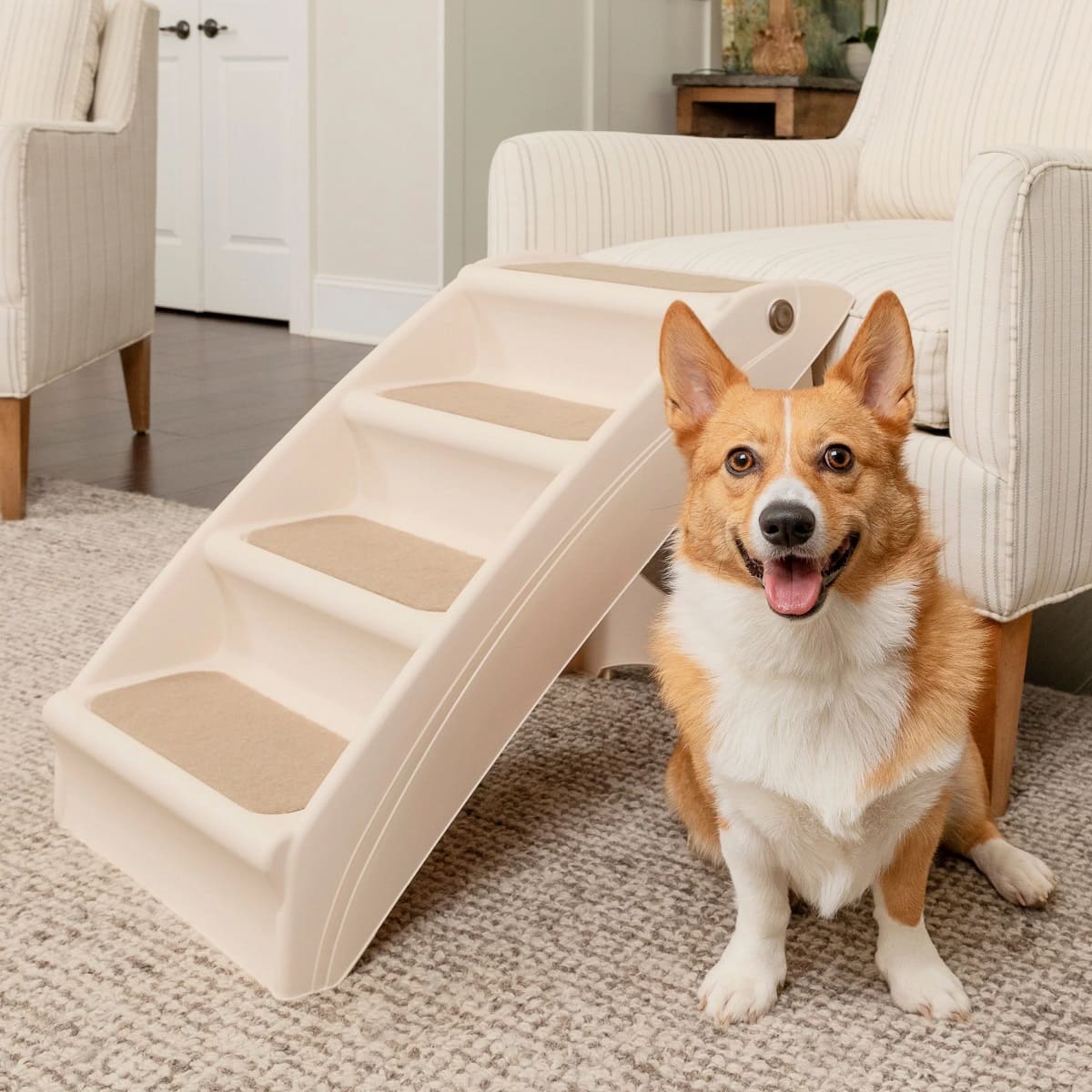
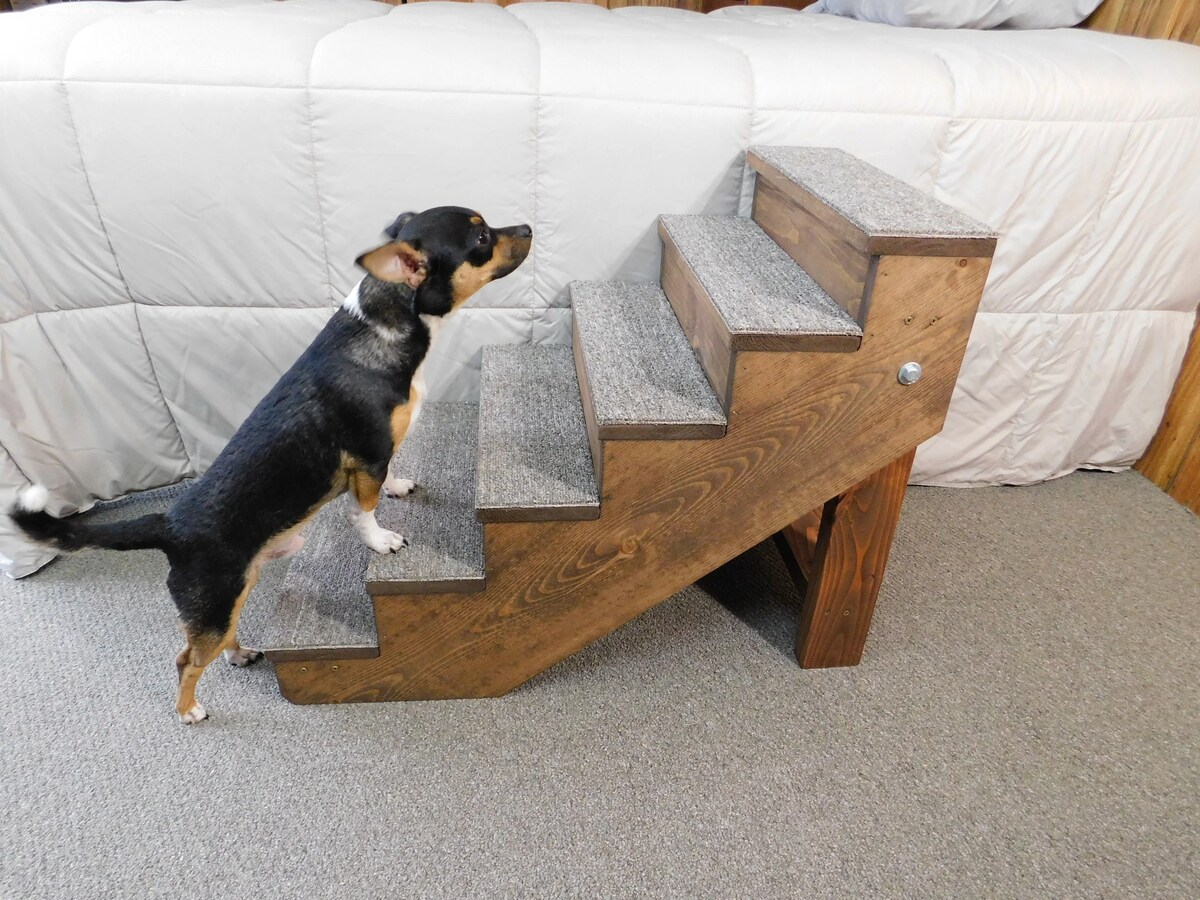
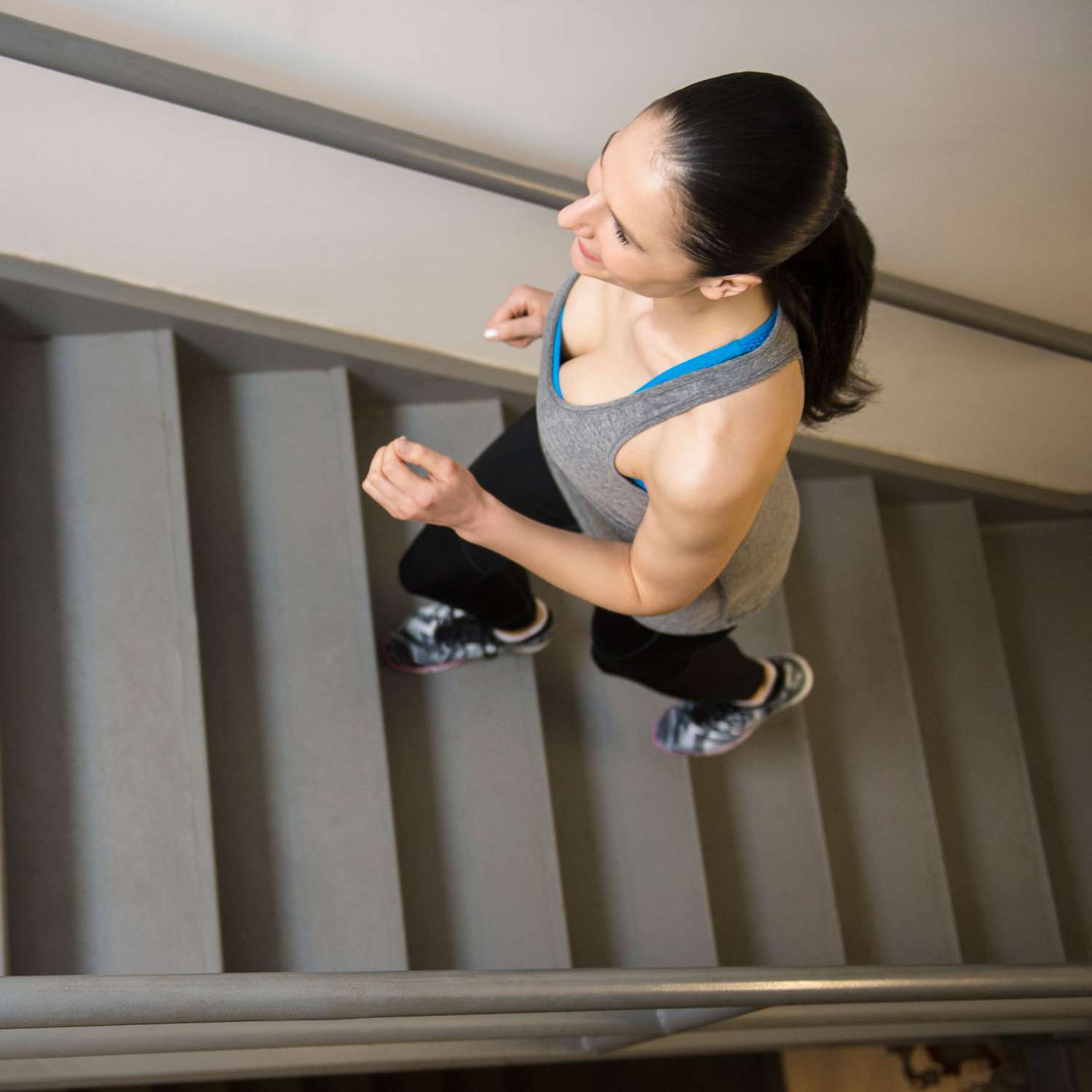
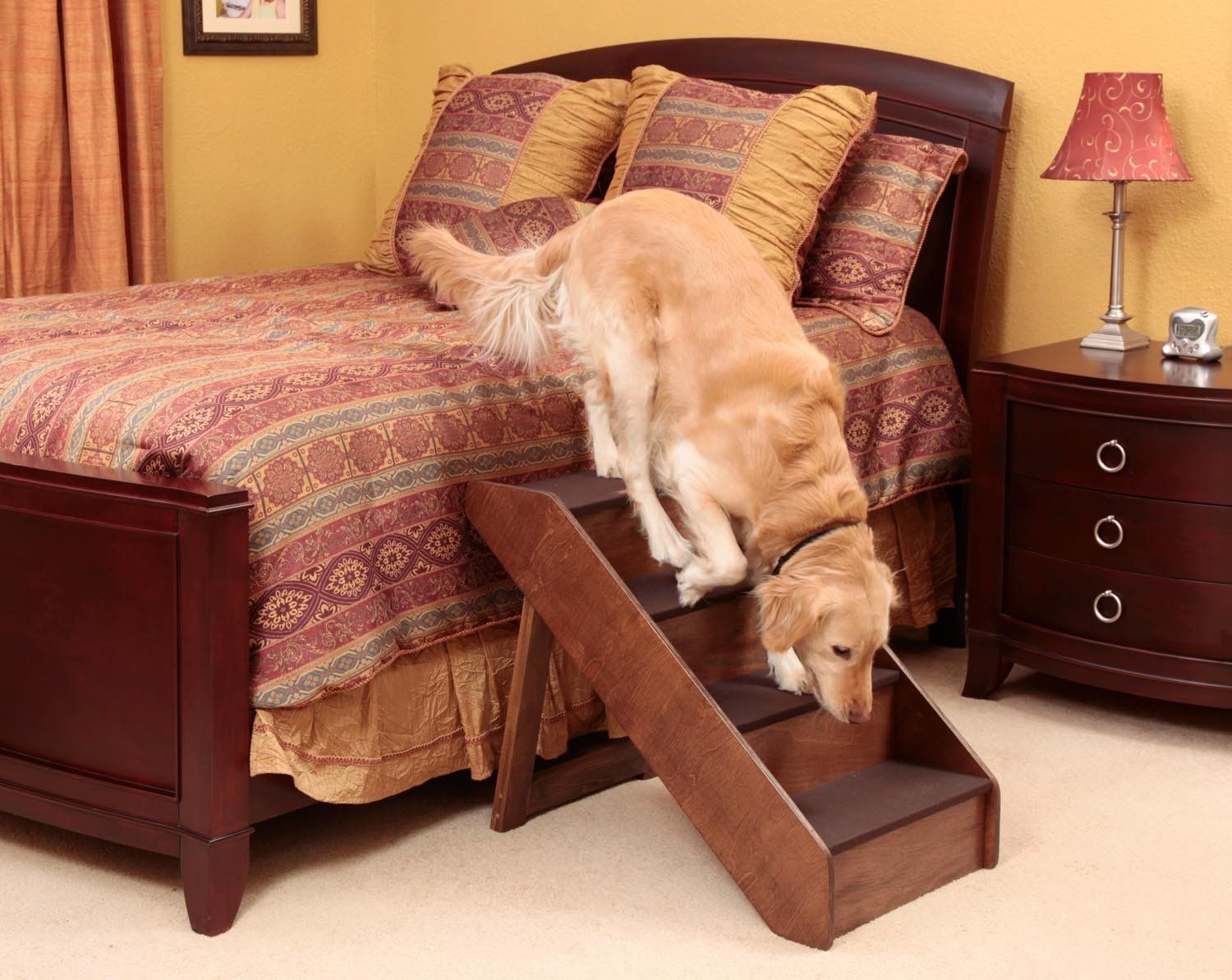


0 thoughts on “How To Teach Dog To Go Up Stairs”